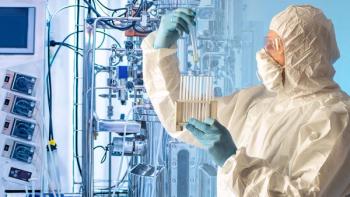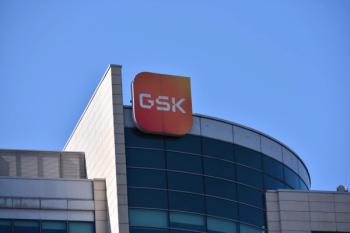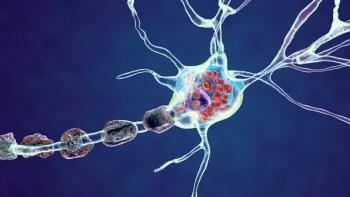
- BioPharm International-11-01-2005
- Volume 18
- Issue 11
Gas Selection/Management for the Biotech Lab
Simple practices can increase profit margins and ensure gas supply.
Managing specialty gases and cryogenic liquids can create a variety of headaches and hassles for life sciences laboratories. Selecting the right grades and quantity is not easy. Upon arrival, a gas supply system must safeguard purity to the point of use. Labs also need to maintain enough cryogens, like liquid nitrogen, carbon dioxide, and dry ice, to preserve their work. Yet cryogens vaporize over time. Add the challenge of returning empty cylinders and the supply chain looks pretty complex. This article focuses on how to buy and manage both gases and cryogens, and offers potential remedies and cost saving measures. A future article in BioPharm will concentrate on gas mixtures and gas stream purity.
Steve Scheuring
For every dollar spent on gases and cryogens, most users spend two to three dollars on inefficiencies in gas selection, storage, handling, administration, waste, and downtime. Addressing these issues can add up to real savings.
SPECIFYING THE RIGHT PRODUCT
Life sciences laboratories have several analytical applications that require carrier, makeup, and fuel gases for gas chromatography (GC) and other equipment, as well as sample storage applications that require liquid cryogens and dry ice. Scientists often specify the names and grades of product they need. However, with few exceptions, there are no industry standards for name or grade specifications. One supplier's "300-size, zero-grade helium" may be very different from another's "300-size, zero-grade helium." In fact, there are no standards for defining what constitutes a zero-grade gas. A researcher may assume that zero-grade helium means the gas is "five-nines" or 99.999 percent pure. However, a review of the product specifications from gas suppliers' websites indicates that no major specialty gas supplier offers zero-grade helium that is 99.999 percent pure. Instead the range of purities was 99.995 to 99.998 percent; one company no longer even offers zero-grade helium.
In the life sciences, there are important exceptions. In order to call a gas a medical grade, it must meet certain Food and Drug Administration (FDA) regulations. Other specialty gases must meet United States Pharmacopeia or National Formulary (NF) standards. In addition, some emissions monitoring standards must meet strict rules outlined by the Environmental Protection Agency or other regulatory bodies. Yet, these are the exceptions. Most gases used in biotechnology laboratories fall into this general rule: the lack of a universal standard for defining gas grades and names makes selection of the correct gas a complex process. Users who select gas by name alone can end up with poor gas selections.
Some biotechnology and pharmaceutical companies needlessly restrict their options and increase costs by writing inappropriate specifications into their standard operating procedures in a misguided attempt to placate FDA. By specifying a manufacturer's product name or grade for carrier gases on a GC used in quality control analysis when such specificity is not required, companies are limiting their options. The key is to understand the specificity required based on the application and then to source it from a reliable organization.
Insulated gloves approved for use in cryogenic service must be worn when operating valves or when the potential exists for human contact with product or exposed cold piping.
The "purity paradox" adds further confusion. Many chemists want the purest gas — gas that is 99.999 percent pure. Instead, they should consider specific impurities that could affect a specific application and then determine the quantity of impurities that can be tolerated without hindering analytical results or adding to operating costs.
The three most common contaminants that affect chromatographic applications are oxygen, water vapor, and hydrocarbons, which all can infiltrate the gas supply from the general atmosphere during filling by the supplier or at the point of use. Oxygen can accelerate column bleeds, reduce column life, and change retention times, as well as cause "ghosts" (unexpected peaks). Moisture can reduce column life as well as shift retention times and increase baseline noise levels. Hydrocarbons also can elevate baseline noise, degrade analyte quantification, and cause ghost peaks. There are a host of other contaminants that can affect performance. For example, some mass spectrometry applications are sensitive to inert gases like krypton, although these gases do not affect many other detectors. Also, consider impurities similar to analytes that the detectors are seeking. Electron capture detectors (ECDs) are sensitive to halogen contamination because ECDs are designed to find halogens.
After understanding the impurities that will affect the equipment, determine the lowest purity level the system can tolerate. Since, in general, the higher the purity, the higher the cost, this will enable users to produce the desired results at the lowest cost.
ENSURING GAS QUALITY
Users must safeguard purity to the point of use by verifying gas quality at every step of the process — from the supplier's raw materials to bulk transfers, cylinder filling, delivery, and most importantly, the gas supply system at the laboratory that carries the product to the point of use.
The most important verification is the final delivered product. Many applications, such as calibration of equipment, require product that includes a certificate of analysis provided by the supplier. Without this certificate, a user may not know if the gas meets specifications. In other cases, the gas does not have to be individually analyzed if it conforms to certain standards. In such cases, the gas may come with a certificate of conformance. Users should be wary of any supplier who tries to represent a certificate of conformance (a promise to meet a specification) as a certificate of analysis (an actual result). Conversely, dictating a certificate of analysis where it is not required may lead to unnecessary custom work by the gas supplier — work that the supplier will build into the customer's cost. Factors that determine whether a certificate of analysis or certificate of conformance is needed include the nature of the work. For example, would Good Manufacturing Practice (GMP) or Good Laboratory Practice (GLP) guidelines call for individual analysis?
Check that the certificate of analysis is for the end-use product in the cylinder, not the raw material. While raw materials are sometimes the source of contamination, most problems are related to cylinder hygiene and the process of filling the cylinder. The three most troublesome contaminants — oxygen, moisture, and hydrocarbons — are contaminants with the greatest potential to enter a cylinder during filling. One of the best ways to check this process is to observe it through a quality audit of the supplier's fill operations and analytical laboratory.
If buyers are sure of the purity of the gas they purchased, the quality of the filling and cylinder cleaning processes, and the supplier's analytical processes, yet are still not getting the results they want, an investigation into their internal gas system is in order. In other words, they may be "drinking clean water through a dirty straw." It is possible that impurities are being introduced by leaks and contamination in the regulators, piping, and other equipment from the gas supply to the point of use.
MANAGING THE GAS SUPPLY CHAIN
Managing the gas supply chain itself — from procurement to onsite cylinder handling to return of the "empty" cylinders after use — often creates added headaches. Biotechnology laboratories that streamline the procurement and use of gas and cryogens can maximize efficiency and minimize hidden costs.
The first step towards managing gas use in the laboratory is to effectively manage cylinder rentals. Gas is one of the few supplies that comes in returnable, rented containers. Most laboratories assign flat rental allocations in which each user is allocated a set portion each month. Because this in-house charge is a flat fee and a relatively low expense, many end-users do not actively monitor cylinder balances. They simply want the gas available when it's needed. This results in overstocking the supply, with users keeping more than a few months' inventory onsite even though their supplier is capable of making several deliveries a week.
When added up across an entire laboratory complex, the rental cost (and potential savings from reducing inventory) can be high.
To help identify overstocking, calculate cylinder turn, or length of time it takes a cylinder to travel through a site. Divide the number of total units purchased per month into the end-of-month balance. Many users are surprised to learn how many months cylinders sit idle in their facility, adding unnecessary costs.
For instance, if a user purchases 50 cylinders per month on average, and averages a 500 cylinder end-of-month balance, it takes ten months for a cylinder to travel through the facility. Assuming the same user pays $5 in rental per cylinder, it amounts to $2,500 per month or $30,000 per year. A reduction in cylinder turn from ten to five months would result in $15,000 in cost savings per year. Again, if the gas supplier is delivering gases a few times a week, even five months inventory may be excessive.
Implementing better cylinder replacement procedures can help realize even more incremental savings. For liquid cryogen applications, end-users are often willing to ignore costs if they can be assured of greater security for their research projects. On the surface, this is understandable. Their life's work is literally in those freezers, and a disruption in service or contamination can put millions of dollars and years of research at risk. For this reason, end- users may tend to replace cryogen cylinders sooner than necessary.
For example, a facility will often replace liquid nitrogen cylinders on a Friday afternoon to ensure an adequate supply over the weekend, even though the container may be half full. But a properly designed automated gas supply system can help to better manage the changeover, leading to more efficient use of the product and added security. For both liquid containers and high-pressure gas cylinders, a manifold system can automatically facilitate the changeover when the container has the lowest possible product. Users can then replace the "empty" cylinder while the backup is in use. In a high-pressure gas system, this typically saves the equivalent of one free cylinder for every six purchased. In a liquid system, some users have reduced cryogen waste by as much as 50 percent without sacrificing a secure supply. The system also ensures that the back-up cylinder is automatically engaged when the cylinder in use runs low, ensuring a constant supply and reducing the potential for human error.
Another source of savings is the use of appropriate backup systems. Many mechanical refrigeration systems use liquid carbon dioxide cylinders as a backup. The need to protect years of research stored in the freezer is considered far more important than the added cost of backup cryogens. Companies often prematurely replace backup cylinders to ensure a sufficient supply is available in the event of a mechanical failure.
One pharmaceutical company had 30 mechanical freezers in one room, each with its own high-pressure carbon dioxide back-up cylinder with a dip-tube to draw liquid cryogen from the cylinder. Because the laboratory could not effectively gauge volume within the cylinders, they were changed every month regardless of the amount of cryogen remaining. At roughly $30 a cylinder, approximately $900 per month was spent in direct costs alone. Each cylinder change took approximately 20 minutes, adding additional labor costs and work interruptions.
The problem was solved by placing a simple scale under each cylinder. Cylinder weight was then used to determine if they were full or empty. By actively monitoring the levels of cryogen in the cylinders, the company saved approximately $10,800 per year in excess product costs.
Laboratories need to consider the impact of supply mode on their operations. Witnessing a scientist wrestling with a cylinder is a sure sign that the laboratory has not implemented the most effective supply chain solution. Rather than a decentralized system of cylinders, laboratories can centralize supply with a micro-bulk or bulk delivery program. These larger-volume supply modes use liquid tanks located within the building or outside. Liquid nitrogen can then be efficiently piped to each point of use at a lower cost per standard cubic foot (SCF) (Table 1). The supplier then refills the tank onsite, eliminating the need to move cylinders or return residual product in "empty" cylinders. Although there can be an initial investment to provide a decentralized gas system, they usually pay for themselves.
Table 1. Gas Supply Options
In general, facilities using more than 5,000 SCF per month of cylinder gas or 61 gallons of cryogen are good candidates for a micro-bulk system. Those using in excess of 45,000 SCF per month or 500 gallons of cryogen can consider bulk supply. However, the feasibility of a mode change is influenced by the layout and location of the laboratory. Typically, facilities located on a ground floor, close to outside walls, and with adequate access for delivery vehicles are ideally suited for bulk or micro-bulk supply. The cost for vacuum-jacketed piping is usually not a major concern when piping runs are short, but costs increase as the distance increases to the point of use.
When installing micro-bulk and bulk tanks, consider telemetry systems that alert the supplier of when it is time to recharge the tank, eliminating ordering and supply hassles.
Facilities that use one central supply for multiple uses will need to consider the requirements for all the uses. For example, a central nitrogen supply used for both product-contacting applications and general uses would need to meet NF standards.
Most facilities can benefit from utilizing multiple supply modes. Users who have installed bulk nitrogen tanks often waste gas on applications requiring a "small squirt" of nitrogen. This causes a large flash loss of gas when the liquid is drawn. Nitrogen consumption can be reduced by as much as 30 percent through separating small-volume applications from the high-pressure bulk system. This can easily be achieved by installing a separate low-pressure liquid cylinder or capabilities to fill small containers onsite.
CRYOGEN SAFETY
Labs also need to take adequate precautions to provide protection for workers who handle cryogens. Due to their extremely cold temperatures, cryogens will rapidly freeze human tissue on contact. Insulated gloves approved for use in cryogenic service must be worn when operating valves, or when the potential exists for human contact with product or exposed cold piping. Gowns, safety glasses, and face shields also should be worn to prevent injury. Transfer lines should be approved for use with cryogens and should have a phase separator to prevent splashing.
Additionally, cryogens produce large volumes of gas when they vaporize. If a sufficient amount of liquid is vaporized, it can create health hazards, particularly if released in a confined space. A small spill of liquid nitrogen expands to 697 times its liquid volume when it vaporizes. This could displace oxygen, potentially creating an oxygen-poor environment. Use and store liquid cryogens in well-ventilated areas. Cryogenic containers should not be stored in closets. Transport of cryogenic containers on elevators should be avoided. If it is absolutely necessary to have an attendant in the elevator, the worker should be equipped with an escape pack with supplemental breathing apparatus, and no other personnel should be in the car. End-users should monitor oxygen levels in areas of cryogen use and never enter an area where oxygen levels are below 19.5 percent. Laboratories should work with suppliers that understand cryogen safety and can help them to source appropriate safety gear and train workers in safe handling practices.
WHAT IT COMES DOWN TO...
People in the life sciences who use gases and cryogens are looking for solutions to the headaches and hassles they face in buying and using these products. Making the right decisions becomes even more critical when they consider the very real dollars associated with the problems.
Evaluating a gas supply chain is like evaluating an iceberg: the part you may not easily see may be the part that gets you in trouble. Look carefully at the total cost of the gas supply above and below the waterline.
Laboratories should also view convenience, security of supply, and cost-efficiency as equally obtainable goals. Through better tracking of supplies, and by reexamining the mode of supply, it is possible to protect vital work while achieving immediate and long-term cost savings.
Finally, look for suppliers willing to work closely with their customers and help them understand their processes and recommend the best gas and equipment solutions to meet their needs. Typically, the customer and supplier handle their respective zones of responsibility. Getting a supplier involved in managing more of the gas supply chain can help a laboratory derive the most out of gas quality, supply requirements and equipment purchases.
Steve Scheuring is marketing manager, specialty gases, Airgas, Inc. 259 N. Radnor-Chester Rd., Radnor, PA. 19087-5285 610.687.5253, Fax: 610.687.1052
Articles in this issue
about 20 years ago
Final Word: Clinical Research Organizations Make a Differenceabout 20 years ago
State Regulation of Clinical Trialsabout 20 years ago
From Smart Tags to Brilliant Tags: Advances in Drug Stability Monitoringabout 20 years ago
Regulatory Beat: Changes and Challenges at FDAabout 20 years ago
StreetTalk: Memory Drugs: "Viagra for the Brain"about 20 years ago
From the Incoming Editor in Chief: Big Molecules and the Big Pictureabout 20 years ago
Risk-Based Cleaning Validation in Biopharmaceutical API Manufacturingabout 20 years ago
Form Fluidly Follows Functionabout 20 years ago
Fermentation & Cell Culture: University Styleabout 20 years ago
From the Editor in Chief: New BeginningsNewsletter
Stay at the forefront of biopharmaceutical innovation—subscribe to BioPharm International for expert insights on drug development, manufacturing, compliance, and more.





